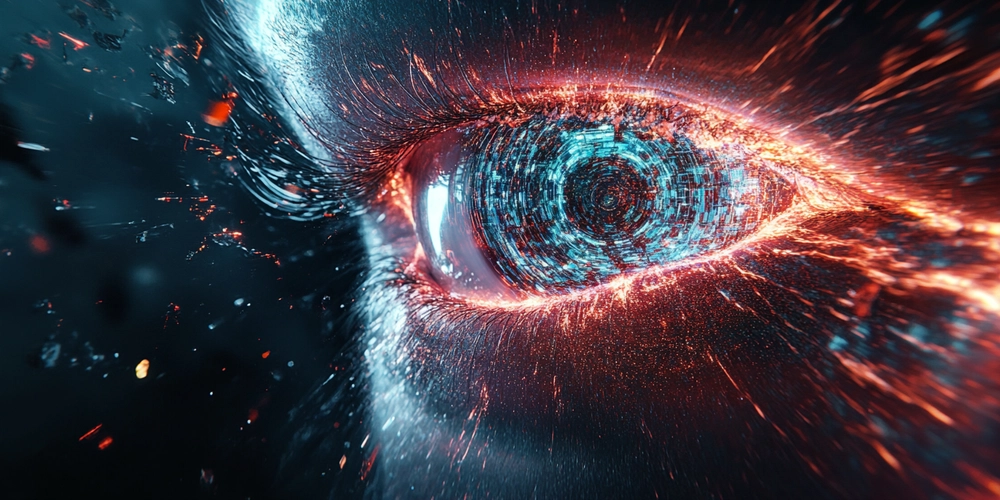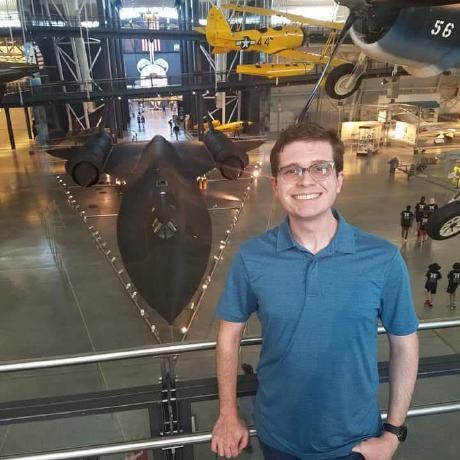AI Image & Video Generation: What's Next?
The Future of Digital Content Creation Has Arrived. Gone are the days when teams of graphic designers, photographers, and editors are needed to produce diverse images and videos; everything can be done with a few keystrokes. AI image and video generation is not a speculative fantasy for the future; it exists now, growing exponentially from today's date to change the way we engage with digital environments. AI image generation is so widespread and sophisticated that people can take a selfie and have a realistic rendering of a portrait made or explore a fantasy realm and have those images rendered for them. This accessibility of public generation is apparent because a plethora of applications and programs cater to everyone from the basic hobbyist to the hardcore software enthusiast. AI selfies. AI avatars. It's like an entire society can find out what it would be like to live in an alternative universe or alternative aesthetic - or to be someone else. Where generations of imaging rendered something like an "original" use of theme - taking an image that already existed and changing it with some other filter or overlay - now, each is some version of layered generation from AI. Yet, where new image creation would seem to be without bounds, these come from diffusion models, where text prompts break down and reconstruct images to an almost eerily exact finish. These systems scan millions and millions of pre-existing images, understanding the layers and textures, the lights and darks, the color arrangements and compositions to reconfigure something that has never existed before. AI-created video is even more recent than still imagery - but it's increasing just the same. New systems try to create little movies from text prompts, apply motion to still images, or create rendered human bodies that gesture with appropriate depth and feeling. If there's any development thing that's exciting, it's the changes with love and human connection. From increased attraction to AI girlfriends, there is now a skyrocketing interest in generated images/text of those for whom users are currently in conversation. People want to see who's on the other end - they need an answer and a flesh-and-blood existence beyond the screen. Therefore, at lightning speed, the following is increasing rapidly: Retention: these systems retain prior conversations and create images based on what you're currently conversing about, essentially making your AI best friend, the image it's talking about. Companionship: The intimate environment in which people collaborate with the AIs fosters some creative output where it's not always warranted. For example, people attempt to assign a system that tracks likes and dislikes, retention of images adjusted over time, rendered due to past discussions - and images that seem so intimate to the user - but actually, images that could be intimate for anyone. But with powerful technology - especially technology so nascent - come ethical considerations. AI's ability to generate images and videos can create anything and everything without the potential of consent, inclusion, or even awareness of humans. Therefore, creators/companies are attempting to instate: Age verification systems Watermarking for attribution of AI and for detection of AI-made works Codes of ethics to prevent the making of repugnant, illegal, or non-consensual works Transparency of what's real Such measures make sense with such growing access and near practicality. The legal and ethical realms attempt to find that happy medium between quasi-creativity and essential control - but it's a long road, made all the more complicated by developments to the technology itself. What's New For AI Generated Content in 2025 and Beyond Here are some new developments on the way that will change AI generated content forever: 1. Multimodal Generation There will be software that can generate text, imagery, audio, and video all at once. One day, for instance, you'll be able to ask it a question and receive a short film generated in real time with imagery but also sound effects, music, and dialogue to boot. 2. Truly Interactive Video The second most thrilling possibility is truly interactive video. No longer will people passively view something - viewers will have the opportunity to manipulate in real time, AI-generated narratives, shifting plots, characters, and conclusions through natural dialogue or simple prompts. 3. Content-Driven Multiverses AI will create multiverses off of content that will be relevant to people's real lives. Your AIs could be everywhere - from chat to gaming to social media to the metaverse - and show up and act the same across the board. 4. Visually Content Aware and Emotionally Intelligent The best AI image generators will understand what users need - and why. Because of a more contextualized chain of conversational back and forth, not only will the systems be able to create conte

The Future of Digital Content Creation Has Arrived. Gone are the days when teams of graphic designers, photographers, and editors are needed to produce diverse images and videos; everything can be done with a few keystrokes. AI image and video generation is not a speculative fantasy for the future; it exists now, growing exponentially from today's date to change the way we engage with digital environments.
AI image generation is so widespread and sophisticated that people can take a selfie and have a realistic rendering of a portrait made or explore a fantasy realm and have those images rendered for them. This accessibility of public generation is apparent because a plethora of applications and programs cater to everyone from the basic hobbyist to the hardcore software enthusiast. AI selfies. AI avatars. It's like an entire society can find out what it would be like to live in an alternative universe or alternative aesthetic - or to be someone else.
Where generations of imaging rendered something like an "original" use of theme - taking an image that already existed and changing it with some other filter or overlay - now, each is some version of layered generation from AI. Yet, where new image creation would seem to be without bounds, these come from diffusion models, where text prompts break down and reconstruct images to an almost eerily exact finish. These systems scan millions and millions of pre-existing images, understanding the layers and textures, the lights and darks, the color arrangements and compositions to reconfigure something that has never existed before.
AI-created video is even more recent than still imagery - but it's increasing just the same. New systems try to create little movies from text prompts, apply motion to still images, or create rendered human bodies that gesture with appropriate depth and feeling.
If there's any development thing that's exciting, it's the changes with love and human connection. From increased attraction to AI girlfriends, there is now a skyrocketing interest in generated images/text of those for whom users are currently in conversation. People want to see who's on the other end - they need an answer and a flesh-and-blood existence beyond the screen. Therefore, at lightning speed, the following is increasing rapidly:
Retention: these systems retain prior conversations and create images based on what you're currently conversing about, essentially making your AI best friend, the image it's talking about.
Companionship: The intimate environment in which people collaborate with the AIs fosters some creative output where it's not always warranted. For example, people attempt to assign a system that tracks likes and dislikes, retention of images adjusted over time, rendered due to past discussions - and images that seem so intimate to the user - but actually, images that could be intimate for anyone.
But with powerful technology - especially technology so nascent - come ethical considerations. AI's ability to generate images and videos can create anything and everything without the potential of consent, inclusion, or even awareness of humans. Therefore, creators/companies are attempting to instate:
- Age verification systems
- Watermarking for attribution of AI and for detection of AI-made works
- Codes of ethics to prevent the making of repugnant, illegal, or non-consensual works
- Transparency of what's real
Such measures make sense with such growing access and near practicality. The legal and ethical realms attempt to find that happy medium between quasi-creativity and essential control - but it's a long road, made all the more complicated by developments to the technology itself.
What's New For AI Generated Content in 2025 and Beyond
Here are some new developments on the way that will change AI generated content forever:
1. Multimodal Generation
There will be software that can generate text, imagery, audio, and video all at once. One day, for instance, you'll be able to ask it a question and receive a short film generated in real time with imagery but also sound effects, music, and dialogue to boot.
2. Truly Interactive Video
The second most thrilling possibility is truly interactive video. No longer will people passively view something - viewers will have the opportunity to manipulate in real time, AI-generated narratives, shifting plots, characters, and conclusions through natural dialogue or simple prompts.
3. Content-Driven Multiverses
AI will create multiverses off of content that will be relevant to people's real lives. Your AIs could be everywhere - from chat to gaming to social media to the metaverse - and show up and act the same across the board.
4. Visually Content Aware and Emotionally Intelligent
The best AI image generators will understand what users need - and why. Because of a more contextualized chain of conversational back and forth, not only will the systems be able to create content of their own over time, but because of a certain emotionality of a given back and forth, they'll create images as if they understand how you feel in that moment.
5. Merging of Worlds
The digital and real world will merge in ways never thought before. Imagine AR glasses - AI-generated friends and companions will be standing in front of you as digital overlays, a mixed reality makes your digital friends actually part of your real world.
This technology will alter human communication with one another - and interpersonally - online, forever. The more contextualized AI become and the more AI friends feel like people, the more human - or machine - identity distinctions will blur when it comes to online friendship and romance. Forming relationships online, like with real people, is essentially an identity.
In addition, for some people, AI friends do what human friends can't - they're always available, they're never judgmental - and the more they appear to have some sort of realistic, fleshy form, the companionship becomes that much more legitimized.
It's not as if AI steps in where human relationships once existed and usurps authority; instead, it broadens the scope for what human relationships are capable of becoming. Some will utilize AI as their comfort zone, their practice field, or their sandbox and transfer any findings to an analog relationship. Some will find value in a relationship that stays online.
Yet the Average User Moving Forward
But what of the Average User? The future of AI content creation will be better with these:
Personalized control: It'll be made for you because the AI knows what you like from previous years of experience.
Consistency: Characters/settings will always be the same despite the number of sequels generated because of subsequent generations.
Multimedia mashups: There will be images/text with vocal chatter and even AR engagement.
Audience control: It'll be made for you because the systems will know how to give you what you like/dislike.
Twice as Nice? For a more adult version of this technology, there are niche sites that offer flirtatious AI chatting, showing how much more effective chat AI could be with visual generation championed.
Conclusion: The Future is Now in AI Photography
We're just scratching the surface of this new age of AI photography and film; what's innovative now will be the standard in a few years. We're paving the way for a time when human attributes and AI photos and videos are indistinguishable; avatars and AIs as personal assistants will be so streamlined and efficient that people won't even realize they're interfacing with a sentient being; images and videos can respond to their viewer beyond mere customization and personalization.
This is the next level of engagement. As creators, consumers, and global citizens.
The guarantee of what future AI content will bring is not clearer pixels but better engagements, better connections, and a more extensive visual vocabulary.












































































































































































![[The AI Show Episode 142]: ChatGPT’s New Image Generator, Studio Ghibli Craze and Backlash, Gemini 2.5, OpenAI Academy, 4o Updates, Vibe Marketing & xAI Acquires X](https://www.marketingaiinstitute.com/hubfs/ep%20142%20cover.png)



























































































































![[DEALS] The Premium Learn to Code Certification Bundle (97% off) & Other Deals Up To 98% Off – Offers End Soon!](https://www.javacodegeeks.com/wp-content/uploads/2012/12/jcg-logo.jpg)


![From drop-out to software architect with Jason Lengstorf [Podcast #167]](https://cdn.hashnode.com/res/hashnode/image/upload/v1743796461357/f3d19cd7-e6f5-4d7c-8bfc-eb974bc8da68.png?#)








































































































.png?#)

































_Christophe_Coat_Alamy.jpg?#)
 (1).webp?#)





































































































![Apple Considers Delaying Smart Home Hub Until 2026 [Gurman]](https://www.iclarified.com/images/news/96946/96946/96946-640.jpg)
![iPhone 17 Pro Won't Feature Two-Toned Back [Gurman]](https://www.iclarified.com/images/news/96944/96944/96944-640.jpg)
![Tariffs Threaten Apple's $999 iPhone Price Point in the U.S. [Gurman]](https://www.iclarified.com/images/news/96943/96943/96943-640.jpg)




































































































































